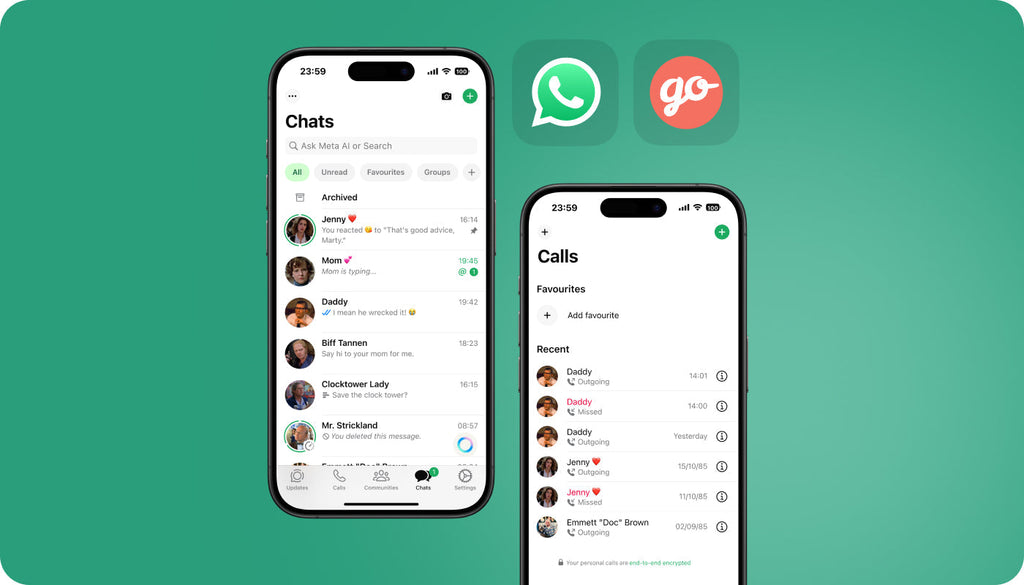The Ins and Outs of Using Your Mobile Phone Abroad
The second we embark on a journey overseas with our phones we get slammed with a pile of confusing techy jargon, pricey roaming services, conflicting advice and trouble with the gear.
Since nobody has the time or the patience to fix their phone abroad, we’ve compiled a short manual that covers all the stuff you need to know to keep you smartphone operational on the road. It will to help you save time, money, and avoid lots of disappointment.
Checking Your Phone's Compatibility Overseas
First of all, you should check if your phone will work in a foreign country. Different cell companies operate on different frequencies and technologies altogether, so, if you want your phone to work overseas, you'll have to check its compatibility with them. Cellular phones work on 2 different network types: GSM and CDMA. The network types are split into different bands (GSM 850 MHz, for example). The majority of modern phones work on a pretty large range of bands within one of the network types. GSM prevails in most countries except for United States, which uses both GSM and CDMA.
To check if your phone will work abroad, you first need to learn which bands it operates on. Try googling your phone's technical specifications (or contact your carrier). Next, you'll have to check which bands are used by the cell carriers in the countries you are traveling to.
Data generally works similarly, but it's a bit more complex. Basically, there are several network technologies: HSDPA, HSUPA, HSPA, HSPA+, LTE. The easiest way to make sense of it all is to check with the Wikipedia list and work backwards (if the country's carrier supports, for example, 2600 MHz LTE, then you should check whether your phone does as well).
Once you've got that sorted out, it's time to deal with the next obstacle – unlocking your phone.
Locked vs Unlocked
I bet you've heard a lot of buzz about unlocked phones on traveling forums and from your friends, but don't really know whether you actually need to have your phone lock free.
If you bought a smartphone with a big discount (or even for free) by signing up for a service contract, there's a possibility that it came network locked (it is especially common in the US). This means the phone company blocks your phone when you try to use it on anything besides its own network. Furthermore, some companies in America also lock phones that are fully paid for, unless you specifically asked for the unlocked version.
With a locked phone on your hands you will have to pay your cell company's expensive roaming rates the second you arrive at the destination up until you get back home.
An unlocked phone, on the other hand, can be used anywhere around the globe. You can replace your provider SIM with a Multi - Country Data SIM and travel all over the world without paying abnormal roaming fees to your carrier.
How To Unlock Your Phone
The easiest way to unlock your phone is to simply contact your mobile carrier and ask them to get it SIM unlocked. They will provide you with a code which is requested when you put in a SIM card from another carrier that will make it possible to use your phone on a different networks. Generally, if there is no issues with your account they will help you, although it is important to mention that every carrier has its own qualifications for giving out the unlock code.
The second approach is to use the unlocking services. You'll find them on the Internet, and all you need to tell them is the model of your phone. The code to SIM unlock your phone will cost you roughly $20. Most likely the code will come directly from the carrier - they sell the codes in bulk to people who then resell them. This method works amazingly, given that you're using a trusted company. Study the forums to find a decent company who will do the job for you.
The third method is through a root or custom ROM. You might also need an unlocked bootloader - read about it the forums. Basically, you're just running new software, or modifying an existing one to get the phone SIM unlocked. This isn't against the law, but a lot more complicated than just simply getting the unlocking code for your new SIM.
Fortunately, some carriers are trying to move forward and away from this practice. As soon as we acquire nationwide and cross-carrier voice over LTE calling, and get the CDMA networks operating as pure data channels, every phone with the necessary frequency bands will be able to work on the Verizon network. The rest will follow, because sparkly TV commercials with smiling folks and lightning bolts will grab the customer's attention. Sprint sells the majority of new phones as SIM unlocked as well. T-Mobile and AT&T, on the other hand, still practice network locking their phones (they use SIMs for voice and data). Carriers in Canada also like locking you in.
What If You can't Unlock Your Phone? What’s Then?
Even if you can’t unlock your phone, you still have a couple of solutions for hassle free and cost effective roaming abroad:
- Search for free WiFi – It should not be a problem to find free WiFi these days, although it is not always safe and convenient because you never know who will be sharing your free network and who’s hands your private data may appear in. Instead of calling, use Goggle Voice or Skype, and replace iMessage with WhatsApp. You can download lots of offline apps for traveling to help you out when you've got no signal. You'll be amazed by how great this can work, and let’s face it, getting off the grid in a foreign country for a while can be fun sometimes. Or not...
- Get a budget smartphone - I'm not saying you should go with some low-priced junk, but you can go with a couple of really decent ones for travelers just under $200. Try Prestigio Multitone 5550 Duo. It can be a bit slow at times but it has a great battery life, and the 5.5in screen is very appealing. Get a multi- use Global SIM, pop it in your new phone and go wherever life takes you.
- Buy a portable hotspot - Portable hotspots aka Pocket Wifi are little devices that are capable to create a wireless network using cellular data connection. – You can connect about ten devices to the network if you need to. Some hotspots come pre-set with a Mobile Data SIM so aside from recharging your gadget from time to time and restoring your data balance, you will not have to do anything else (e.g configuring the Hotspot or looking for local SIM in the foreign lands)
- Go with a tablet with cell capabilities - if you've got a 3G/4G tablet, it may be already unlocked. If that's the case, you can take it on the trip and use instead of the phone - get a data-only SIM, and use WhatsApp and Skype for making calls and sending text messages. The tablet can also be used as a hotspot to share the connection with the rest of your gadgets.




